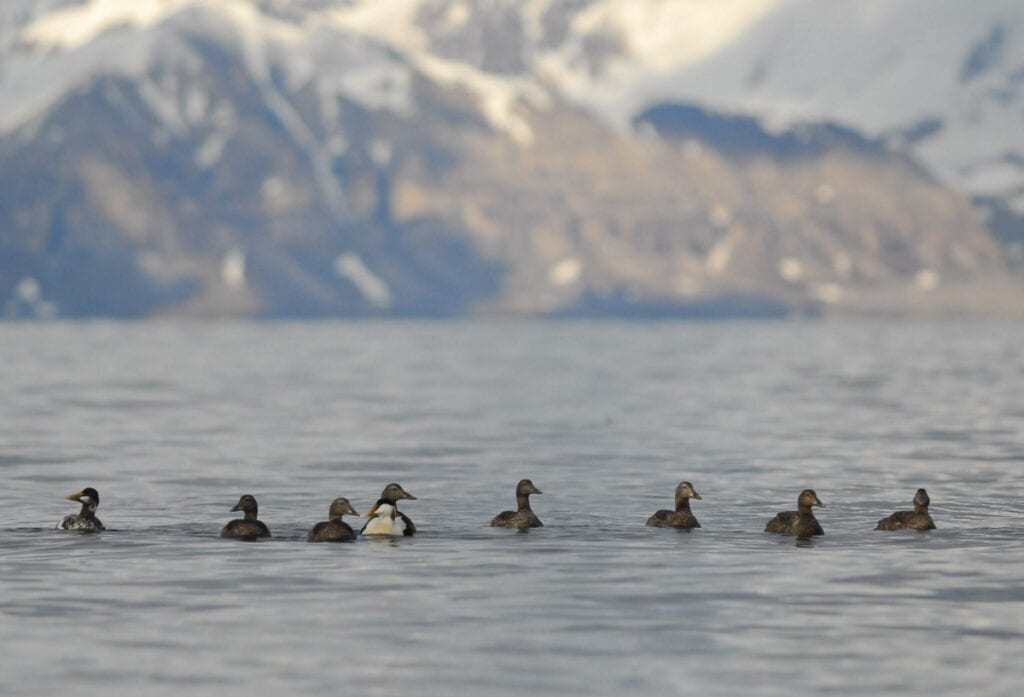Migration strategy may determine climate impact on eiders
Studying three different populations of common eiders, researchers have demonstrated that weather conditions on wintering grounds affect the survival of the birds. However, this comes about in different ways and there are different degrees of climate impact, not only between populations, but also among individuals within a population.
Being able to answer how wild-ranging animals respond to climate change is of great importance to researchers and managers. One should, however, be careful when drawing conclusions for species without having tested for internal variation. This is well demonstrated in a French-Norwegian-Canadian study that was published recently. Data on female eiders from a sub-arctic population on the coast of North-Norway and two arctic colonies in Canada and Svalbard, were investigated, and the objective was to answer whether different migration strategies between and within populations would result in an equivalent variation in survival rate under the influence of changing climatic winter conditions. The three populations in question winter in different areas and experience very different winter climate, which, in this study was proxied using the North-Atlantic oscillation (NAO).
Read the article:
The survival of the two arctic populations (from Canada and Svalbard), which migrate south from their respective breeding grounds in the autumn, was directly influenced by winter climate (NAO). In the sub-arctic population (from North-Norway), which stays near the breeding colony in the winter, there was also an effect of the NAO, but with a time lag of 2-3 years. Furthermore, the degree of importance of the NAO on survival rate varied within the Canadian population (individual heterogeneity). A probable explanation to this internal variation is that the population is comprised of two groups wintering in different areas – one along the southwest coast of Greenland and the other along the southeast coast of Canada.
Contact person: Sébastien Descamps, Norwegian Polar Institute
